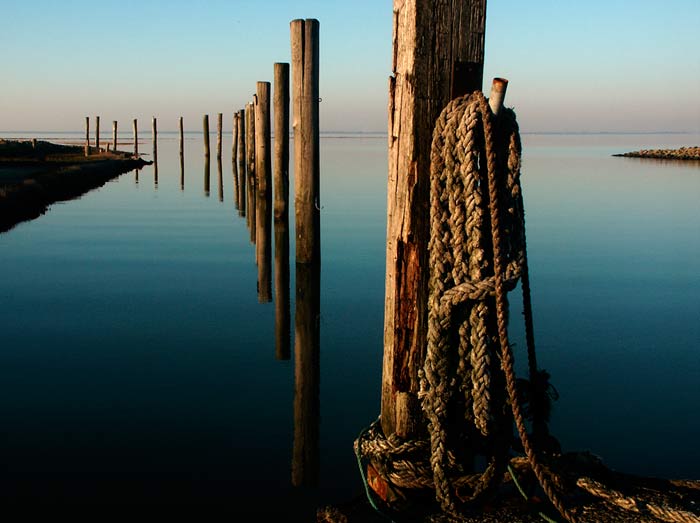
Naturally, being in the midst of a landscape filled with sounds, smells, and air movements, quite differs from merely looking at an image of it. A picture is just visual and all the rest is left up to the imagination of the viewer. And yet, beyond straight documentation, photography does have the ability to communicate atmosphere and emotions and even preserving these for posterity.
Surely this is the essence of a good picture? Landscape photography offers numerous ways to achieve such atmospheric images.
In contrast to studio photography, outdoor scenes are often tied in with landscapes. Therefore, on many of my assignments, these played an expressive role in my pictures. To create emotional images, I had to learn some basic rules about landscape photography. This is what my experiences and photographic challenges have taught me.
THE HORIZON
It took me some time to realize the importance of the horizon in a picture. This thin line so far away can be surprisingly dominant when it comes to taking pictures. I find it worthwhile mentioning this first because once one is aware of it, working consciously with the horizon in the background will help enormously when designing a photograph and trying to tell a story in a single shot.
The horizon is a natural part of our perception of space. However, in a two-dimensional photograph it gets a different importance by drawing a line that may well divide an image in two halves. Amazingly, the distant horizon can have quite an impact on close-up objects. Its thin line, some 5 to 10 miles away, may vitally shape the picture even when the subject is right in front of my lens.
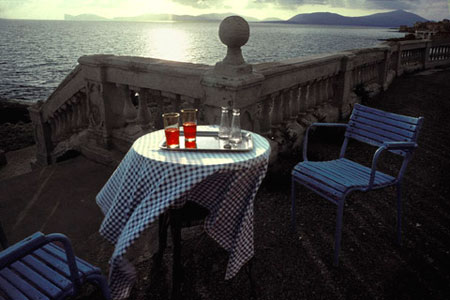
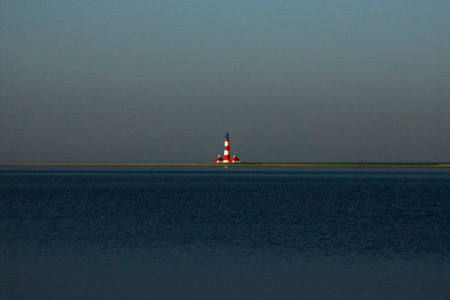
With a wide-angle lens, the line of the horizon stretches considerably further to the left and right. Its effect changes with each different placement within your frame. For instance, placed extremely high up, it puts the emphasis on the foreground.
Further down, it complies with our normal perspective. Right in the middle, it creates a distinct graphic image. This can be very attractive, especially when the object of focus connects both halves of the picture. However, I am always cautious with a centralized horizontal line since it can easily become boring.
Placed even further down on the other hand, the horizon gives more emphasis to the sky, especially with dramatic cloud formations or during a storm.
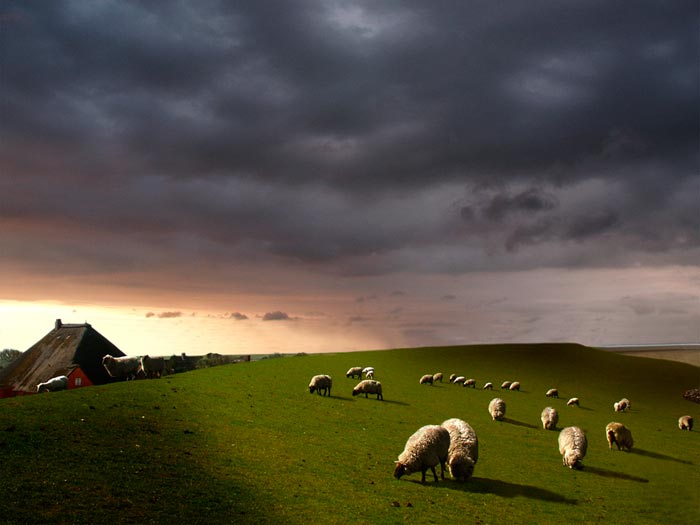
With the horizon extremely low, a picture changes significantly: the scene appears expansive and every object in the foreground becomes distinctly highlighted against the background of a broadened sky.


Even a slight tilt of the camera causes the horizon to tilt diagonally across the picture. This may be adventurous for instance with a car in a curve or for action scenes. However, with a ship on the ocean, a diagonal horizontal line can create a weird effect by making it appear to slide downstream.
I avoid allowing the horizon to cut my pictures into two halves. In areas with mountains, trees or buildings, this is less of a problem because the horizontal line is interrupted. In flat areas, however, objects in the foreground below the horizon can easily make the upper half of the picture appear too empty.
An easy trick solves the problem instantly: by lowering the camera down and giving it a slight upwards tilt, objects in the foreground will be raised above the horizon until they stretch into the upper part of the picture. Even a very small object in the foreground or background can connect both halves of the image for a more harmonious composition.
Just slightly bending your knees will usually do the trick. Indeed, the difference between a boring and an interesting photograph can depend on those few inches of body position!
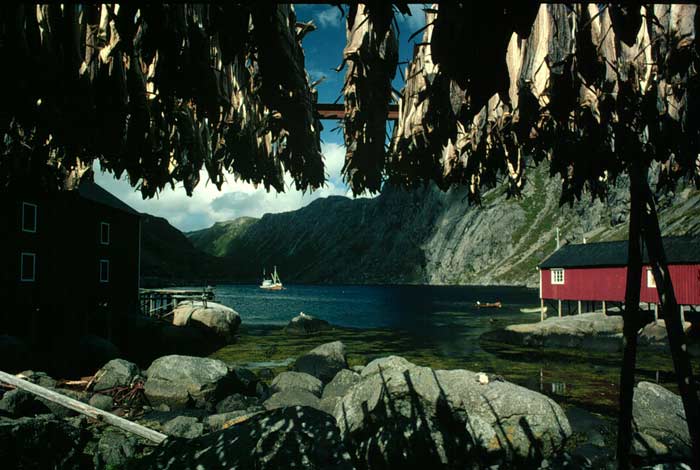
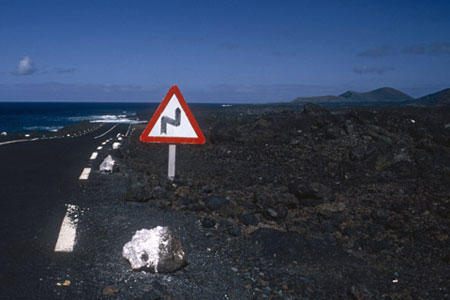

DEPTH
Any landscape needs space. To show space, a picture has to have depth. The greater the distance is between the foreground and background, the more intense the depth. No matter where the focus sits, what focal length is applied, or how big the area is, depth is what gives an image drama and helps the story.
In this example below, with a swan right in the foreground and castle in the distance, everything is in focus – the 28 mm wide-angle lens handles this with ease. It works because the castle is big enough to still be seen in the distance.

Another example demonstrates the use of a telephoto lens: with the sunset in the background being considerably smaller, a wide-angle lens would let the background shrink even more. By contrast, a telephoto lens enlarges the complete frame including the sun, though it does so by compromising on depth of field. Here, focus is on the fence in the foreground.

A dominant foreground can create even more depth, provided the background shares prominence. Very often, it is the foreground that lends the background of a picture more importance!
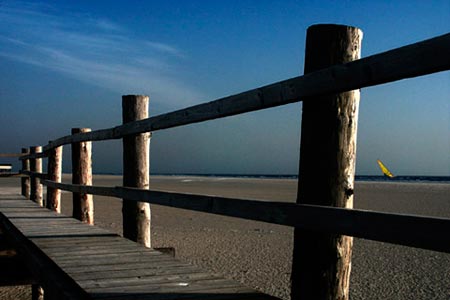

AXES
Equally as important as the position of the horizon are the axes – especially the vertical one – on which the major subject of a picture is placed. A vertical center axis accentuates the subject’s significance. Moving it more to the left or right will add tension.
The most balanced spot between the two is within 1/3 off the frame. With a major object close to a picture’s edge, a wide space opens and helps in telling a story or creating atmosphere. For the horizontal axis, a position above or below the horizon has a vital effect on the impact the subject has on the viewer.
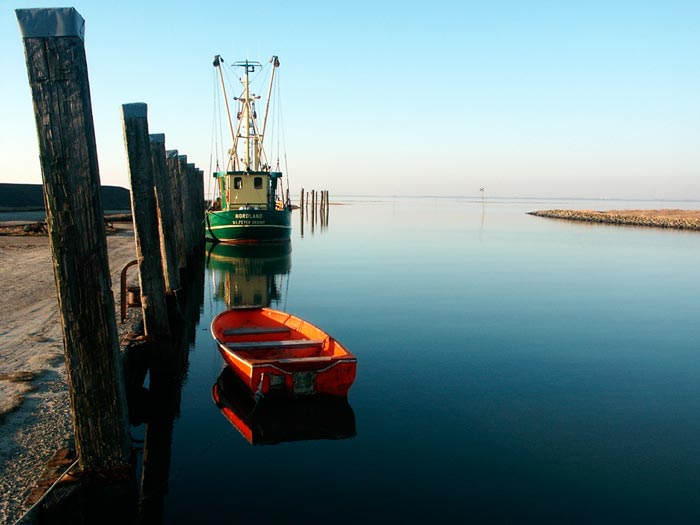
All this may sound complicated, but with some practice, it actually becomes rather simple to overcome these photographic challenges. In fact, it is fascinating looking through the viewfinder and playing around with what you see and what you might wish to express, just by moving your body and camera.
All of a sudden, one realizes the great creative potential many themes offer, regardless of what kind of camera is being used.
by Gert Wagner
(Edited from his book PHOTOGRAPHIC CHALLENGES and iphone app)
All Text & Images: © Gert Wagner. All Rights Reserved.

Leave a Reply